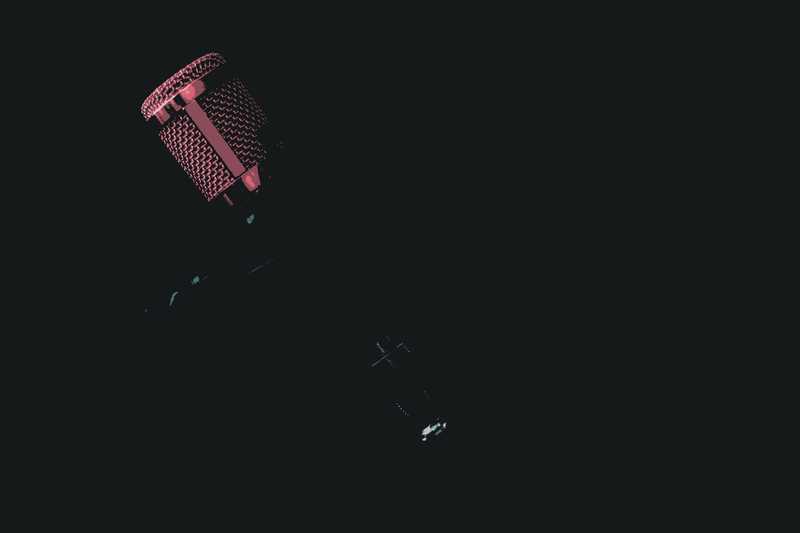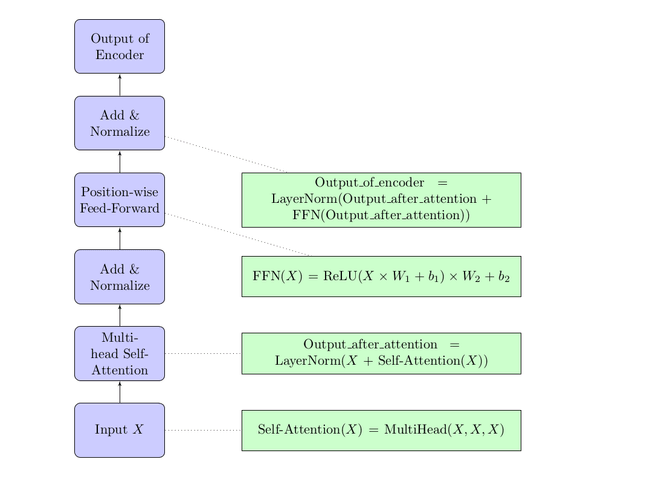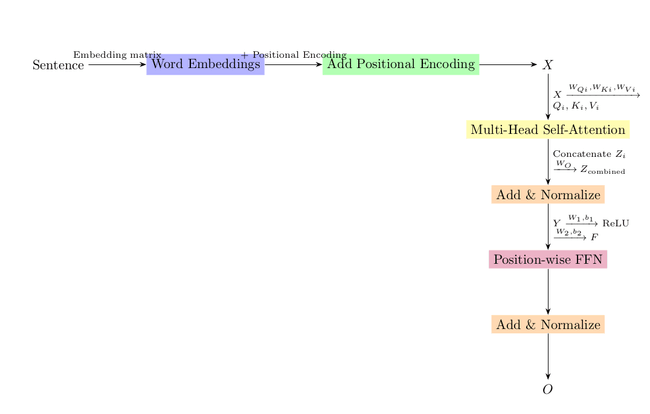Encoder in the Transformer
Each encoder in the Transformer consists of two main parts Multihead SelfAttention followed by Add Normalize...

Encoder in the Transformer:🔗

Each encoder in the Transformer consists of two main parts:
-
Multi-head Self-Attention followed by Add & Normalize: This is the self-attention mechanism we discussed earlier, where the input sequence attends to all positions in itself. After the attention scores are computed and used to produce an output, a residual connection (i.e., the "add" operation) is added, and then layer normalization is applied.
-
Position-wise Feed-Forward Networks followed by Add & Normalize: This consists of two linear transformations with a ReLU activation in between. Just like in the self-attention mechanism, after the feed-forward network, a residual connection is added, followed by layer normalization.
- is the matrix after positional encoding.
Equations for the Encoder's Operations:🔗
- Self-Attention:
- Add & Normalize after Self-Attention:
- Feed-Forward:
Assuming the feed-forward network consists of two linear layers with weights and , and biases and , and using ReLU as the activation function, it can be represented as:
- Add & Normalize after Feed-Forward:
So, the output of the encoder, after processing the input matrix (with positional encodings), is . If there are multiple encoder layers in the Transformer, this output will serve as the input for the next encoder layer.
Encoder Process with Parameters:🔗

-
Word Embeddings & Positional Encoding:
-
Multi-Head Self-Attention:
- For each head :
- Self-attention for each head:
- Combine all heads:
-
Add & Normalize after Self-Attention:
-
Position-wise Feed-Forward Network (FFN):
- FFN Parameters: for the first layer and for the second layer.
-
Add & Normalize after FFN:
Where:
- , , and are the weight matrices for computing the Query, Key, and Value for the attention head.
- is the weight matrix for combining the outputs of all attention heads.
- are the weight matrix and bias for the first linear transformation in the FFN.
- are the weight matrix and bias for the second linear transformation in the FFN.
- and are the learned scale and shift parameters for layer normalization.
The final output after one encoder layer is . If there are more encoder layers, would serve as the input for the next encoder layer.
COMING SOON ! ! !
Till Then, you can Subscribe to Us.
Get the latest updates, exclusive content and special offers delivered directly to your mailbox. Subscribe now!